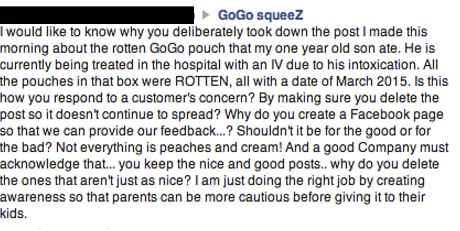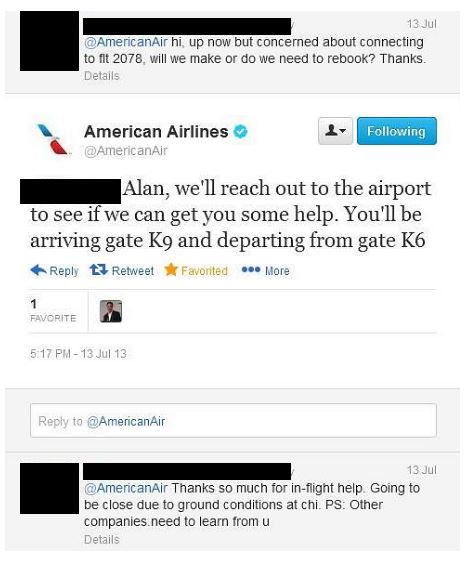Businesses and brands reap many benefits from an active social media presence. Unfortunately, the personal connections that make social media special can also lead to uncomfortable negative comments on your page from disgruntled customers. No business or brand wants to see unhappy customers putting their name on blast for other potential customers to see. There’s no real way to prevent negative comments, but how you handle them can make or break your relationships with customers.
The Don’ts
To start, let’s address some of the things you should avoid doing when you see a negative comment or post relating to your brand.
- Ignore It- By thinking the comment will somehow resolve itself by avoiding it, you’ll probably make the situation worse. There may be the occasional internet “troll” that’s trying to get a reaction out of your business, but most negative comments come from unhappy customers. One ignored comment can quickly turn into a social media wildfire that’s rather difficult to put out. It’s better to have some sort of response than no response at all.
- Delete It- This “if no one saw it, it didn’t happen” approach can also cause brands to lose the trust of customers who notice their comments and feedback being removed. Remember, even if that customer’s review isn’t seen by others on your page, they have hundreds of friends and other ways to get their message out that will cause much more damage than a negative review. The example below shows a furious customer re-posting an incredibly angry message after her first one was removed. When people see this message, they lose trust in the company who is attempting to cover up a product flaw. You can delete spam, profanity, or random attacks that are not related to your company.

- Non-Apology Apology- You should absolutely avoid responding with an apology that’s not heart felt or sincere. We’ve all seen the comments before from a company that touts their success instead of responding to the actual problem. The response usually goes something like this: “our company has been providing excellence for over 75 years, we are sorry that our product didn’t meet your expectations.” This kind of half apology puts the blame back on the customer for having unrealistic expectations instead of apologizing for a fault in the product quality. One thing to remember is that the customer is ALWAYS right, even when they’re wrong.
- The Rude Apology- It should be a no brainer, but avoid saying anything mean or rude to your customers. This not only makes them angrier, but also ruins your brand image.
What You Can Do
Now that you have an idea of some of the things that you probably shouldn’t do when you receive a negative comment, let’s talk about some things you can do. Remember, customers who take the time to complain are usually looking for a reason to stay a customer. They care enough to tell you about their experience with your brand and are looking for some sort of resolution.
Identify Who You’re Talking To
Just like crayons, not all customers are alike. A study on customer complaints outlines three kinds of customers that issue complaints. By knowing what persona the customer fits into, you can better tailor your response to suit them.
- The Meek Customer- This person may just leave a two star review with no comment or maybe express a small concern. They don’t want to be a burden or thinks you may not care. This kind of customer might just need a little extra attention to feel special to the brand again. Maybe sending a private message asking them to share their concerns or commenting something along the lines of “Karen, we value your continued business and would love to hear your concerns about your experience. We want to make sure you get the best quality every time you shop with us.”

- The Aggressive Customer- More outspoken than the meek customer, the aggressive customer is not afraid to share what’s on their mind. They’ll quickly put your company name on blast and go down swinging. It may be tempting to mirror this tone, but fighting fire with fire only makes a bigger fire. To respond, make sure you react with firm politeness that is pleasant. Don’t be too submissive though, you’ll want to make sure your team is still treated with respect. Lastly, don’t be afraid to cut the customer loose if it gets to that point. If they want to cancel their account or order and there is no resolve being made, don’t drag the fight out any longer. Below is an example of an aggressive customer who was pretty upset about her pizza order and a calm and friendly response from Dominos.

- The High Roller- This is perhaps one of your most valuable customers. They likely put a lot of money into your services and products and expects to be treated like a VIP. They don’t want to hear excuses and expect things to be made right very quickly. It’s important to know who these customers are and to quickly solve their problems to ensure a lifetime of business with them.
Be Swift
Sometimes the most frustrating thing for people is the amount of time that passes before their problem is resolved. As a business, you should have a plan to monitor your social accounts and quickly respond to complaints and concerns. There are even tools like Spout Social and Audiense that monitor your brand mentions and specific keywords for you. Responding quickly shows the customer that their concern is a top priority for your business and will hopefully relieve some of the anger they feel.
Plan to Fail
One of the most important things you can do is come up with a social response plan. This plan should outline how quickly you want to respond to comments as well as guidelines for removing comments with heavy profanity. Even with a plan, each response should have some level of uniqueness to it. The ‘We are sorry to hear you had an issue, please email support@support.com to resolve the issue” gets really old rather quickly.
Encourage the complainant to personal message their contact info to have a more personal phone call. It’s important to move the conversation somewhere more personal to make sure the customer’s needs are being met. Your plan should also include a way to record complaints to help with product innovation later down the road. If you receive dozens of complaints about the speed of service, that’s something your company will want to look into to avoid angrier customers. Just like Ben Franklin said “If you fail to plan, you are planning to fail.”
Don’t Forget the Love
While resolving issues should be the top of your priority list, be sure to make time to thank the people who took time out of their day to praise your company. A quick thank you or shout out goes a long way. Happy customers have the ability to be just as infectious with their social circle as angry customers. By responding to both, you reassure customers that their opinions matter. For an added touch, follow up with those customers who were angry to make sure their needs are still being met.

Haters Will Hate
The complaints will probably never fully go away, as there will always be the occasional one-off situation that results in dissatisfaction. If you stay positive, plan ahead, and genuinely care about the customer’s happiness, negative social reviews shouldn’t be a major problem for you. Remember that the power of a customer’s social network can be hundreds of potential lost business opportunities, so avoid ignoring or deleting comments. Be sincere, be quick, and know who you’re talking to. Do this and you’ll be able to convert your haters back to lovers.